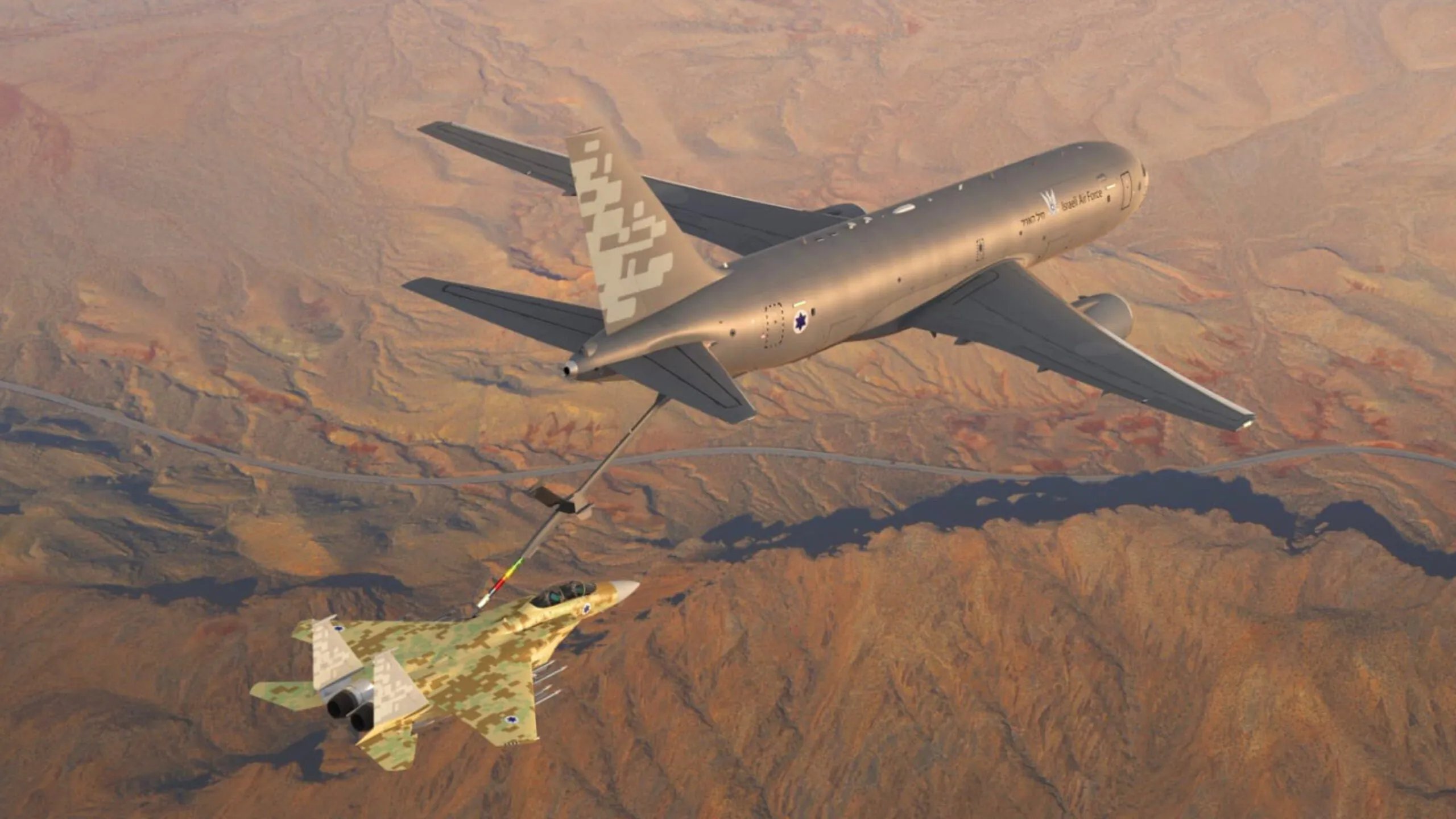The Israel Defense Forces (IDF) have provided an even better look at the previously secretive remote vision system (RVS) that is central to the operation of the Israeli Air Force’s critical Boeing 707 tanker fleet. TWZ has previously looked at this system — used by the boom operator to see what is happening at the rear of the aircraft while connecting the boom with the receiving aircraft — but the actual operator interface has, as far as we know, never been seen in such detail.
The new imagery comes from an official IDF video that features the 707 tanker — known locally by the Hebrew name Re’em, meaning oryx — and which was published to coincide with its 60th anniversary. The footage shows details including the fuel tanks in the cargo hold and the boom. The internal tanks can also be removed, allowing the aircraft to be reconfigured as transports, including with airliner-style passenger seating. Most interesting, though, is the boom operator’s position, with the RVS interface.

This includes control sticks on either side and a foot-operated communications system, meaning the boomer’s hands are kept free to operate the console. The boomer’s screen is relatively large and surrounded by what appear to be exclusively analog instruments — a reflection of the overall age of the installation.

We got a previous view of the screen of the RVS back in September 2024, in a video showing portions of a long-range strike mission flown against Houthi targets in Yemen. You can read that earlier analysis here.

In July of the same year, after the 707 supported another long-range IAF raid on Yemen, IDF released video from the RVS camera feed itself, although not of the actual boomer interface that controls the system.
Overall, the console used on the Israeli 707 makes a fascinating comparison with the much more modern iteration of the same technology that’s now used on the U.S. Air Force’s KC-46 Pegasus. Of course, specific technology used in the KC-46 has gained something close to notoriety, since the complex RVS has proven to be a particular source of problems for that program.

As we can see in the IDF video, as in the KC-46, the Israeli 707 boom operator goes about their work from a station in the main cabin, aided by an array of cameras at the rear of the aircraft that feeds into the RVS. According to an audio description provided with the video, the boomer is provided with special glasses, as in the KC-46, although the 707 RVS has just a single monitor rather than the multiple ones in the Pegasus, which uses a hybrid 2D/3D system.

As we discussed in our previous coverage of the Israeli RVS, it’s nothing short of surprising that this earlier concept has been serving for decades in a very high-stakes role, while the U.S. Air Force still waits for a revised system in the KC-46:
“Perhaps the most surprising facet of this is that Israel developed and fielded a remote vision system that seems to function without any lingering difficulties, and did so many years ago, while the U.S. version used in the KC-46 is still mired in delays. We still don’t know exactly how bad the teething of this older Israeli system was when it was introduced many years ago. Another modern remote vision system has meanwhile also been developed and introduced by Airbus, on the A330 Multi-Role Tanker Transport (MRTT).“

Whatever the story of the Israeli RVS, its days in service now appear to be numbered — ironically, the 707 will be superseded by the KC-46. An initial eight of these aircraft have been ordered and they are almost certain to be provided with the next-generation RVS installed — the 2.0 version of the system is expected to be delivered starting in April 2026. While Israel might decide to continue operating the 707s for a while, to supplement the KC-46, these are, by now, aging platforms, and the most worn-out examples are already being retired.

As for the IAF 707 Re’em fleet, this entered service in 1979, with then-newer 707-300 airframes replacing previous 707-100s. These aircraft were bought from commercial airlines before being modified locally for aerial refueling. The conversion was done by Israel Aerospace Industries (IAI). Additional airframes were acquired and upgraded to tankers as recently as the 2010s.
In addition to vital aerial refueling, which is fundamental for allowing the Israeli Air Force to conduct long-range strikes, the 707 also has an important role as a command-and-control station and communications node. The aircraft carries a satellite communications suite to provide critical, secure beyond-line-of-sight comms with appropriately equipped tactical aircraft like the F-15 and F-16 and command centers far away. This is also highly important for long-range strike operations.

Today, Israel is understood to have no more than seven 707 tankers in service, meaning that these assets are more precious to the service than ever. As Israel moves toward phasing out these enduring aircraft, we may well start to learn more about its operations and some of its more sensitive technologies, like the RVS, that have helped it remain the backbone of the Israeli Air Force’s long-range strike capabilities since the early 1980s.
Contact the author: thomas@thewarzone.com
